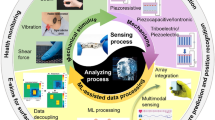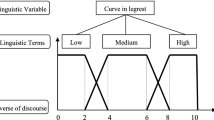For the purpose of enhancing the adaptability of computer-aided process planning systems, two connectionist modelling methods, namely neocognitron (i.e. neural network modelling for pattern recognition) and fuzzy associative memories (FAM), are applied to the phases of feature recognition and operation selection respectively in order to provide the system with the ability of self-learning and the ability to integrate traditional expert planning systems with connectionism-based models. In this paper, the attributed adjacency graph (AAG) extracted from a (B-Rep) solid model is converted to attributed adjacency matrices (AAM) that can be used as input data for the neocognitron to train and recognize feature patterns. With this technique, the system can not only self-reconstruct its recognition abilities for new features by learning without a priori knowledge but can also recognize and decompose intersection features. A fuzzy connectionist model, which is created using the Hebbian fuzzy learning algorithm, is employed subsequently to map the features to the appropriate operations. As the algorithm is capable of learning from rules, it is much easier to integrate the proposed model with conventional expert CAPP systems so that they become more generic in dealing with uncertain information processing and perform knowledge updating. mg]Keywords mw]Computer-aided process planning mw]feature recognition mw]neural networks mw]fuzzy neural networks mw]operation selection mw]connectionist model mw]fuzzy associative memories
Similar content being viewed by others
References
Bahrami, A. and Dagli, C.H. (1993) From fuzzy input requirements to crisp design. International Journal of Advanced Manufacturing Technology, 8(9), 52–60.
ElMaraghy, H.A. (1993) Evolution and future perspectives of CAPP, Annals of the CIRP, 42(2).
Fu, K.S. (1982) Syntactic Pattern Recognition and Applications, Prentice-Hall, Englewood Cliffs, NJ.
Fukushima, K. and Wake, N. (1991) Handwritten alphanumeric character recognition by the neocognitron. IEEE Transactions on Neural Networks, 2(3), 355–365.
Ishibuchi, H., Fujioka, R. and Tanaka, H. (1993) Neural networks that learn from fuzzy if-then rules. IEEE Transactions on Fuzzy Systems, 1(2), 85–97.
Joshi, S. (1987) CAD interface for automated process planning, Ph.D. thesis, Purdue University, Purdue, USA.
Knapp, G.M. and Wang, H.P. (1992) Acquiring, storing and utilizing process planning knowledge using neural networks. Journal of Intelligent Manufacturing, 3, 333–344.
Kosko, B. (1992) Neural Networks and Fuzzy Systems, Prentice-Hall, Englewood Cliffs, NJ.
Kudrycki, T.P. (1988) Neural network implementation of a medical diagnosis expert system, MS thesis, University of Cincinnati, USA.
Kumar, A.S. (1993) A knowledge-based generative modular fixture design methodology for prismatic workpieces, Ph.D. thesis, National University of Singapore, Singapore.
Minsky, M. and Papert, S. (1969) Perceptrons: An Introduction to Computational Geometry, The MIT Press, USA.
Monostori, L. and Barschdorff, D. (1992) Artificial neural networks in intelligent manufacturing. Robotics & Computer-Integrated Manufacturing, 9(6), 421–437.
Singh, N. and Qi, D.Z. (1992) A structural framework for part feature recognition. International Journal of Integrated Manufacturing Systems, 3(1), 4–12.
Suh, N.P. (1990) The Principles of Design, Oxford University Press, Oxford.
Vosniakos, G.C. and Davies, B.J. (1993) Knowledge-based selection and sequencing of hole-making operations for prismatic parts. International Journal of Advanced Manufacturing Technology, 8(9), 9–16.
Author information
Authors and Affiliations
Rights and permissions
About this article
Cite this article
Gu, Z., Zhang, Y.F. & Nee, A.Y.C. Generic form feature recognition and operation selection using connectionist modelling. J Intell Manuf 6, 263–273 (1995). https://doi.org/10.1007/BF00128649
Issue Date:
DOI: https://doi.org/10.1007/BF00128649




